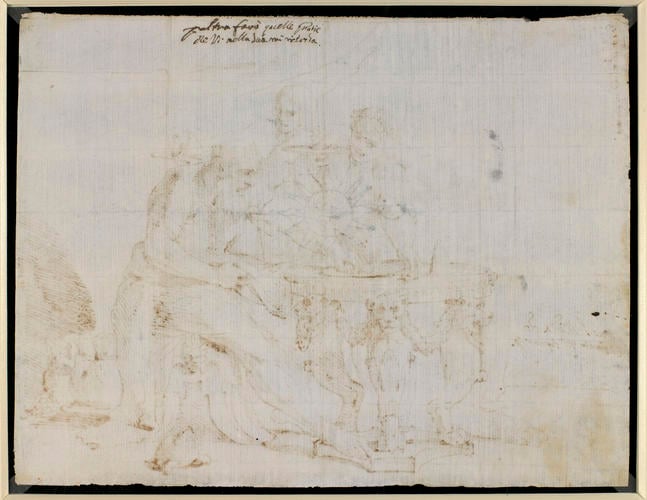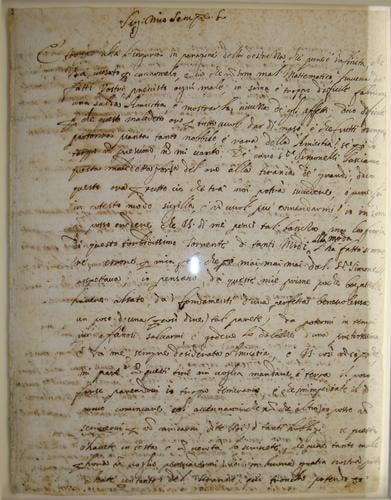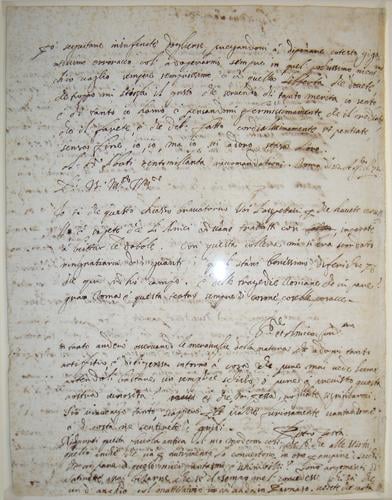-
1 of 253523 objects
Midas c.1640-50
20.8 x 27.2 cm (sheet of paper) | RCIN 905932

Pietro Testa (1607/11-50)
Midas c.1640-50

Pietro Testa (1607/11-50)
Midas c.1640-50

Pietro Testa (1607/11-50)
Master: Midas Item: Midas: a letter accompanying the drawing c.1640-50

Pietro Testa (1607/11-50)
Master: Midas Item: Midas: a letter accompanying the drawing c.1640-50




-
A drawing depicting King Midas seated at a round table as he is served by two dismayed male attendants. Inscribed by the artist, lower right: quel’Mida che / tanto ne tiranegga; at upper left: che coglionerie vi scrivo. Accompanying the drawing is a letter written in Testa's hand, addressed to Simonelli, a patron of Testa.
This sheet is a fine illustration of Testa’s difficult dealings with his patrons. It was attached to a draft letter to Niccolò Simonelli, a collector whom he had known since at least 1636 (the remainder of the letter is on a separate sheet in the Royal Library at Windsor). Testa accuses Simonelli of trying to buy off their relationship, whereas Testa had thought that through the few ‘bagatelles’ already executed for Simonelli he could ‘build a wall of benevolence’ and ‘enjoy the sweetness of a most precious and, by me, always-desired friendship’. He goes on to explain that in the drawing he had converted an ancient fable to modern usage, and thus compares Simonelli to Midas, the king of Phrygia who was granted a wish that all he touched would turn to gold, but soon began to starve when his food was likewise transformed. Testa takes this to symbolise the tyranny of those for whom that which should nourish (friendship) is turned not to virtue but to gold (or seen in terms of money) – the inscription to the left of the drawing may be loosely translated as ‘That Midas, who so holds sway’. But the letter ends in jovial mood: ‘Who knows if I, too, will not one day with my pencil go to Parnassus? You see what bollocks [coglionerie] I write to you.’ In Stuttgart there is a crude tracing of the drawing by Testa himself, inscribed with a version of part of the last paragraph of the Royal Collection letter.
A native of Lucca, Pietro Testa had settled in Rome by the late 1620s and entered the circle of the patron and collector Cassiano dal Pozzo, for whom he prepared many drawings after the Antique (cf. RCIN 913092). Testa was a natural draughtsman and printmaker but it was to the status of a great public painter that he aspired, and a succession of frustrated projects and strained relationships with patrons led to his presumed suicide by drowning in the Tiber.
Text adapted from Portrait of the Artist, London, 2016Provenance
Probably acquired by George III in 1762 as part of the collection of Cardinal Alessandro Albani; first recorded in a Royal Collection inventory of c.1800-1820 (Inv. A, p. 127: 'Various Compositions drawn with a Pen by Pietro Testa, many of them etched by himself')
-
Creator(s)
Acquirer(s)
-
Medium and techniques
Measurements
20.8 x 27.2 cm (sheet of paper)
Other number(s)
RL 5932Alternative title(s)
The Feast of Midas